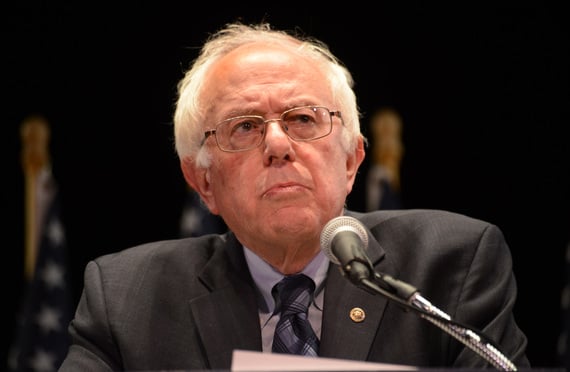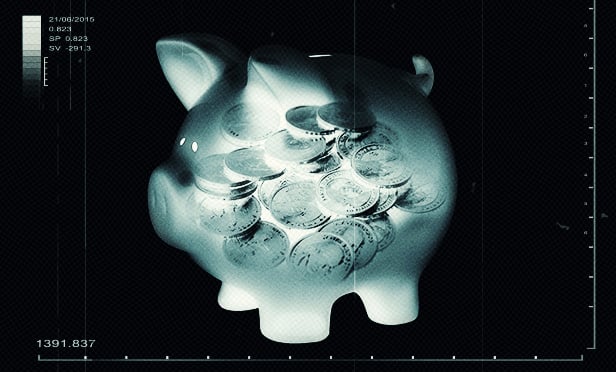(Bloomberg) -- Hillary Clinton’s proposed tax increases onpeople with high incomes and on businesses would constrain economicgrowth, leading to lower wages and about 697,000 fewer jobs,according to a right-leaning policy group’s analysis.
|Related: Trump and Clinton not so different on wages,economy
|The Democratic presidential nominee’s tax plan, which includesproposals to raise taxes on multimillionaires and impose a“financial risk fee” on banks, would change economic behaviorenough to reduce U.S. gross domestic product by 2.6 percent overthe long run, according to a study prepared by the Washington-basedTax Foundation. In that slightly smaller economy, wages would be2.1 percent lower, the report said.
|The Clinton campaign disagreed with the analysis and said theTax Foundation’s methodology was flawed. Clinton’s plan will“result in stronger growth and more jobs, not the opposite,” saidJulie Wood, a campaign spokeswoman.
|By itself, “the plan would reduce the after-tax incomes of thetop 1 percent of taxpayers by 6.6 percent but increase theafter-tax income of all other income groups by at least 0.1percent,” the Tax Foundation’s analysis said. Still, afteraccounting for smaller economic growth that would result, “allafter-tax incomes would fall by at least 0.1 percent in the longrun,” it said.
|Related: Trump and Clinton talk jobs and taxes, but avoidhealth care, retirement
|After accounting for that reduced tax base, Clinton’s plan wouldincrease federal revenue by $663 billion over 10 years, the TaxFoundation determined -- a number that’s less than half of someprevious estimates.
|Wood, the Clinton spokeswoman, noted that an analysis by adifferent group, the Tax Policy Center, found that RepublicanDonald Trump’s tax plan would “add $7.2 trillion to the nationaldebt by 2026 and $20.9 trillion by 2036,” if large tax cuts forbusinesses and individuals were not offset by spendingdecreases.
|“Clinton has a serious plan to build an economy that works foreveryone, not just those at the top,” Wood said. She also cited aJuly study by Moody’s Analytics that found Clinton’s plan wouldresult in stronger growth. That analysis was published beforeClinton made revisions to her tax plan.
|Dynamic scoring
The Tax Foundation’s findings are the result of “dynamicscoring,” which seeks to account for changes in economic behaviorthat would result from changes to the tax code. In the case ofClinton’s plan, higher marginal rates on both capital and laborincome would mean that the economy wouldn’t grow as much as itwould without the effects of those changes, according to theanalysis. Dynamic scoring is controversial among economists, whodisagree on the best way to construct such models.
|Related: Trump and Clinton differ on overtime rule
|Because dynamic-scoring models anticipate that people will work,buy and invest more when their taxes are lower -- generatingeconomic growth -- the models typically find that tax cuts costless than otherwise predicted.
|On a “static” basis -- that is, without considering sucheconomic changes -- Clinton’s plan would raise $1.4 trillion in newfederal revenue over a decade, the study found. That amount matchesthe overall estimate for Clinton’s plan that the Tax Policy Centerreleased this week.
|Analysts have moved quickly to reassess the tax plans of bothClinton and Trump over the past six weeks as both candidatesannounced changes.
|Economists at the Tax Foundation have previously worked withTrump’s campaign to help evaluate his tax proposals -- though lastmonth, that working relationship was strained publicly aftercampaign officials made conflicting statements regarding one ofTrump’s signature plans: cutting taxes on the income of businessesorganized as “pass-through” entities. The campaign has yet topublish full details of how that proposal would work.
|Citing that uncertainty, the Tax Foundation published ananalysis of Trump’s latest plans that provided a range of effects.On a static basis, Trump’s proposals would reduce federal revenueby $4.4 trillion to $5.9 trillion over 10 years, the group found,while on a dynamic basis, the reduction would range from $2.6trillion to $3.9 trillion.
|The group’s analysis of Trump’s plan also found that it wouldincrease economic growth by at least 6.9 percent, increase wages byat least 5.4 percent and result in at least 1.8 million more jobs.
|Estate tax
One of Clinton’s most recent proposals -- overhauling the estatetax to require much higher payments from the largest estates --would raise $309 billion over 10 years on a static basis, but just$7 billion under dynamic scoring, according to the analysis.
|Related: Hillary Clinton proposes small-biz tax cuts
|“Clinton’s new estate tax proposal has the single largesteconomic impact of all her policies,” wrote Kyle Pomerleau, the TaxFoundation’s director of federal projects and the study’s author.Its effect alone accounts for about 40 percent of the economicimpact of Clinton’s plan, he wrote.
|“This is because the much higher marginal estate tax rates wouldgreatly reduce the incentive to save and invest,” Pomerleau wrote.As a consequence, collections of individual and payroll taxes woulddecrease, he said -- and that’s what explains the decline from $309billion to $7 billion.
|Under current law, the estate tax applies a 40 percent rate toestates worth more than $5.45 million. Clinton wants to raise thatrate to 45 percent and apply it to estates worth more than $3.5million. Then, she wants progressive rates on higher-value estates:50 percent on those worth more than $10 million; 55 percent forthose worth more than $50 million and 65 percent for those worthmore than $500 million. (Those dollar values are doubled formarried couples.)
|Clinton’s plan to overhaul the taxation of capital gains bycreating a six-year scale of graduated tax rates would raise $35billion over 10 years on a static basis, but would actually reducerevenue by $47 billion under the Tax Foundation’s scoring. Her planfor capital-gains taxes, which is designed to reward long-terminvestors, would apply a 20 percent rate to gains on assets heldmore than six years. The rate would gradually increase for gains onassets held for shorter time periods, topping out at 39.6 percentfor assets held less than two years.
|Another new Clinton proposal would double to $2,000 per childthe amount of the child tax credit that’s available to familieswith children under the age of 4. She’d also increase the amount ofthe credit that can be paid as a refund to families who owe nofederal income tax. That boon for middle-class taxpayers would costabout $199 billion over 10 years on a static basis, and $220billion under dynamic scoring, the report said.
|Copyright 2018 Bloomberg. All rightsreserved. This material may not be published, broadcast, rewritten,or redistributed.
Complete your profile to continue reading and get FREE access to BenefitsPRO, part of your ALM digital membership.
Your access to unlimited BenefitsPRO content isn’t changing.
Once you are an ALM digital member, you’ll receive:
- Critical BenefitsPRO information including cutting edge post-reform success strategies, access to educational webcasts and videos, resources from industry leaders, and informative Newsletters.
- Exclusive discounts on ALM, BenefitsPRO magazine and BenefitsPRO.com events
- Access to other award-winning ALM websites including ThinkAdvisor.com and Law.com
Already have an account? Sign In
© 2024 ALM Global, LLC, All Rights Reserved. Request academic re-use from www.copyright.com. All other uses, submit a request to [email protected]. For more information visit Asset & Logo Licensing.








